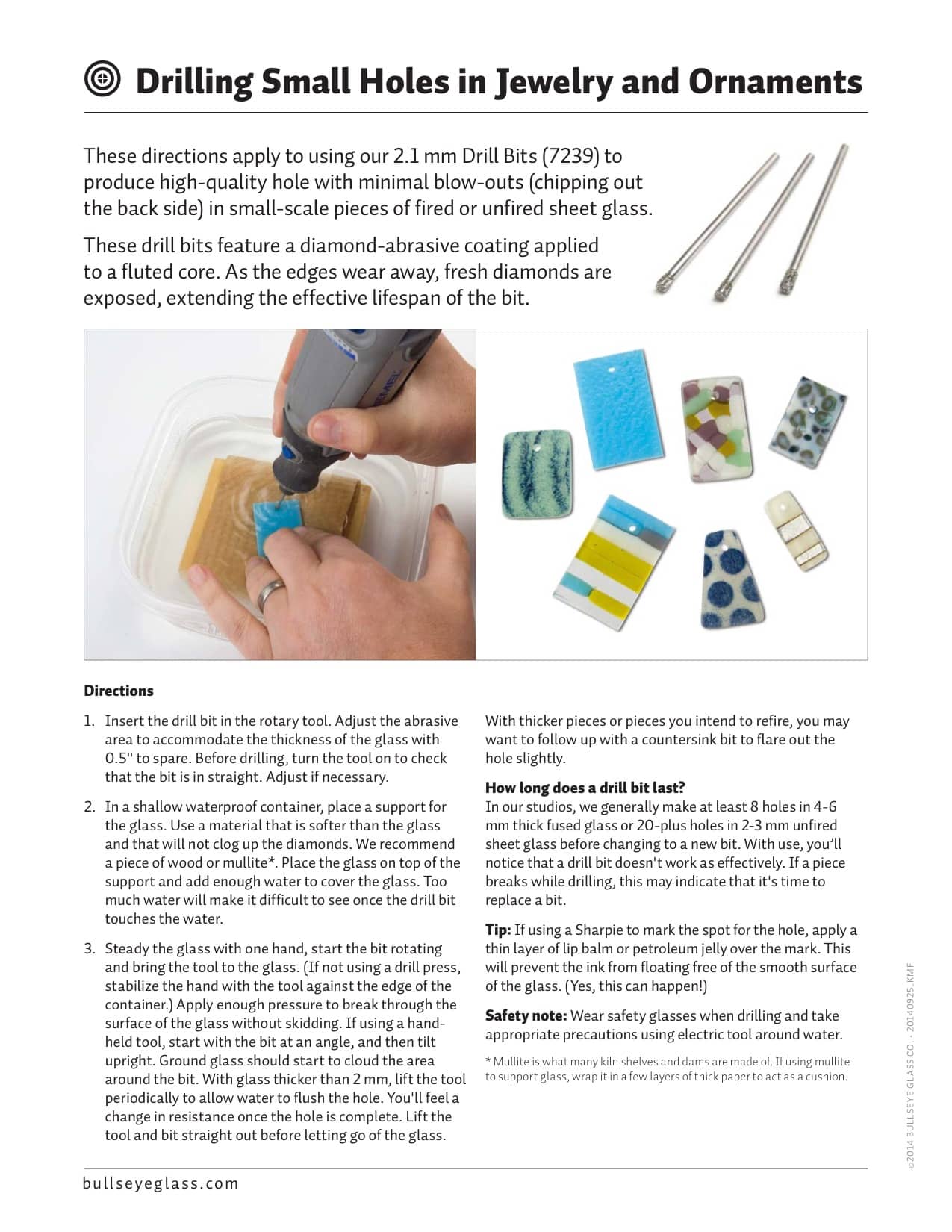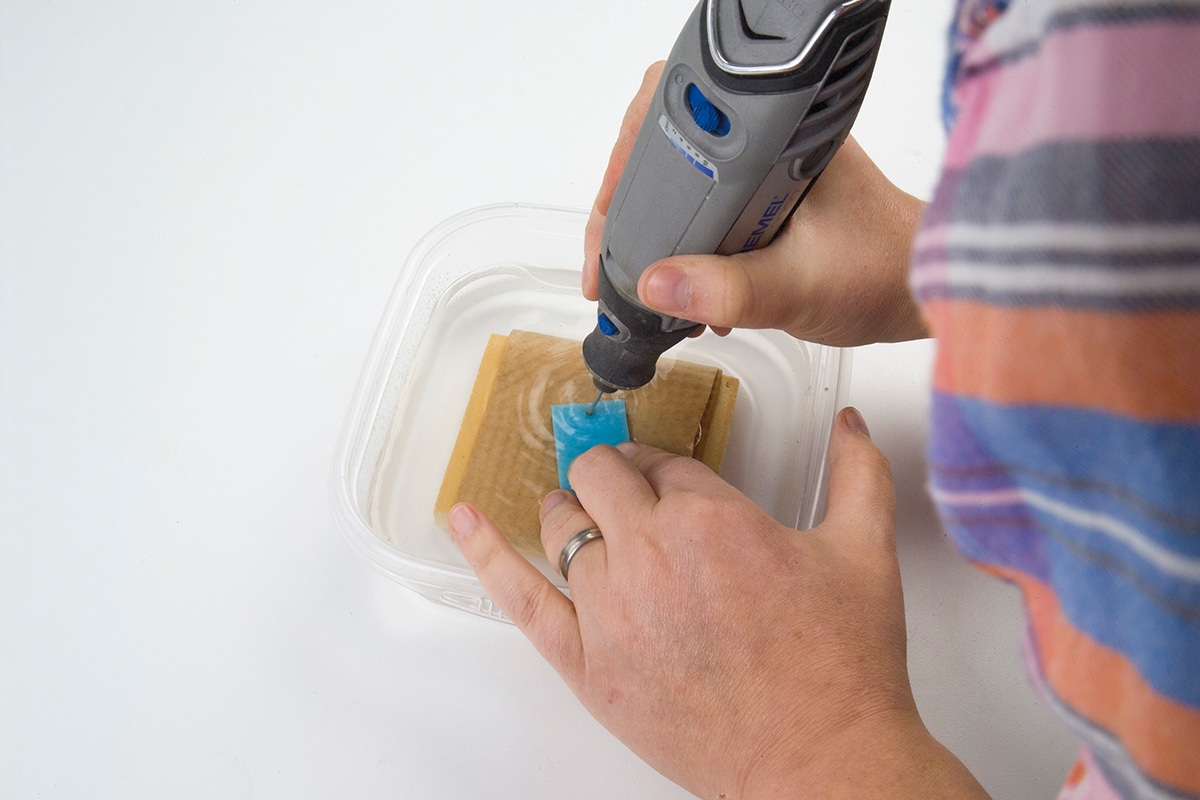These directions apply to using our 2.1 mm drill bits (007239) to produce high-quality holes with minimal blow-outs (chipping out the back side) in small-scale pieces of fired or unfired sheet glass.
These drill bits feature a diamond-abrasive coating applied to a fluted core. As the edges wear away, fresh diamonds are exposed, extending the effective lifespan of the bit.
Directions
- Insert the drill bit in the rotary tool. Adjust the abrasive area to accommodate the thickness of the glass with 0.5˝ to spare. Before drilling, turn the tool on to check that the bit is in straight. Adjust if necessary.
- In a shallow waterproof container, place a support for the glass. Use a material that is softer than the glass and that will not clog up the diamonds. We recommend a piece of wood or mullite*. Place the glass on top of the support and add enough water to cover the glass. Too much water will make it difficult to see once the drill bit touches the water.
- Steady the glass with one hand, start the bit rotating and bring the tool to the glass. (If not using a drill press, stabilize the hand with the tool against the edge of the container.) Apply enough pressure to break through the surface of the glass without skidding. If using a handheld tool, start with the bit at an angle, and then tilt upright. Ground glass should start to cloud the area
around the bit. With glass thicker than 2 mm, lift the tool periodically to allow water to flush the hole. You’ll feel a change in resistance once the hole is complete. Lift the tool and bit straight out before letting go of the glass. With thicker pieces or pieces you intend to refire, you may want to follow up with a countersink bit to flare out the hole slightly.
How long does a drill bit last?
In our studios, we generally make at least 8 holes in 4–6 mm thick fused glass or 20-plus holes in 2–3 mm unfired sheet glass before changing to a new bit. With use, you’ll notice that a drill bit doesn’t work as effectively. If a piece breaks while drilling, this may indicate that it’s time to replace a bit.
Tip: If using a Sharpie to mark the spot for the hole, apply a thin layer of lip balm or petroleum jelly over the mark. This will prevent the ink from floating free of the smooth surface of the glass. (Yes, this can happen!)
Safety Note: Wear safety glasses when drilling and take appropriate precautions using electric tools around water.
*Mullite is what many kiln shelves and dams are made of. If using mullite to support glass, wrap it in a few layers of thick paper to act as a cushion.


